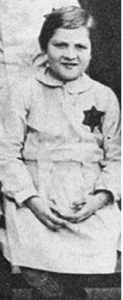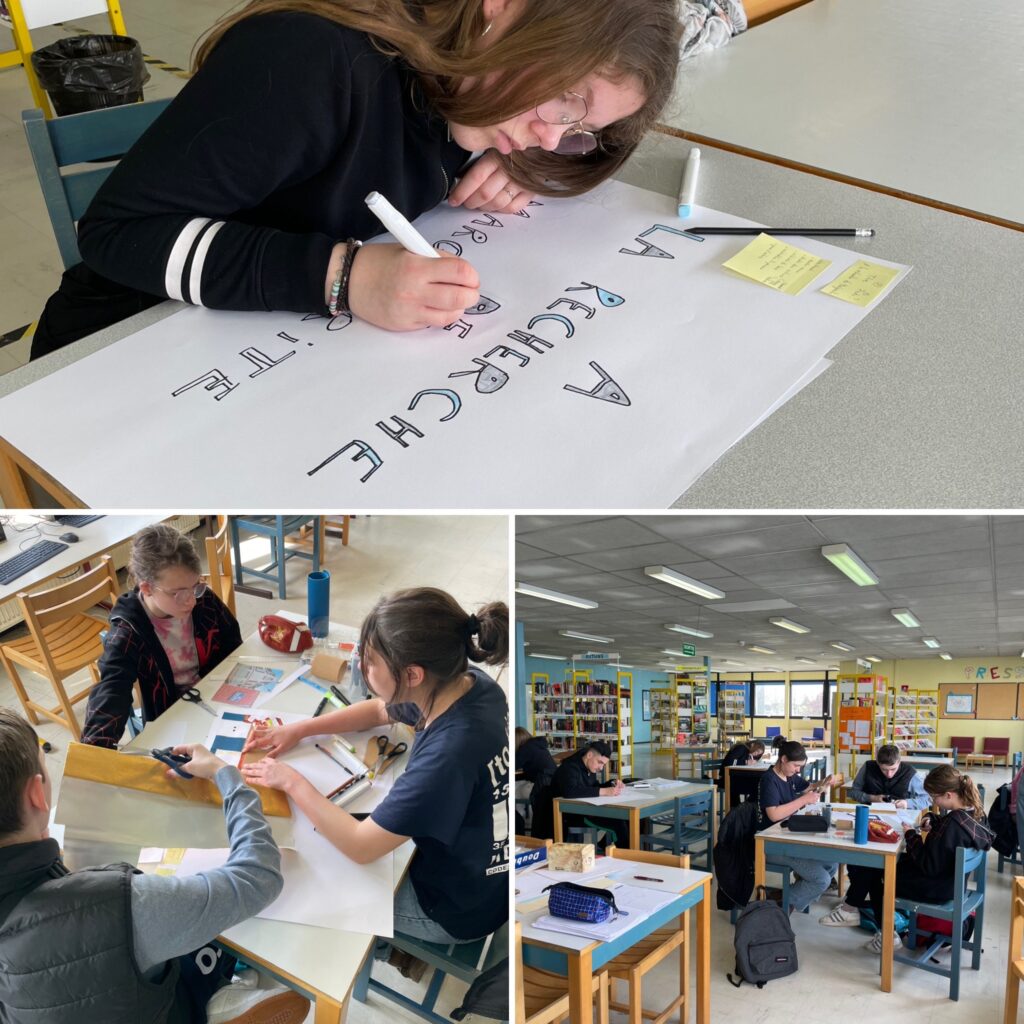Marguerite HERSCHER
This photo of Marguerite is from Jean Laloum’s book, “La maison des enfants de Saint-Mandé, UGIF n° 64 1943-1944” (The children’s home in Saint-Mandé, UGIF n° 64 1943-1944), published by Les éditions Polyglottes, 1994.
We spent several months researching the life story of Marguerite Herscher, a little girl who was born in Lens, in the Pas-de-Calais department of France, and murdered in Auschwitz along with her entire family.
We tried to retrace her horrific journey.
We know next to nothing about her day-to-day life as a little girl.
Please take the time to read what we have written about her.
We hope you will find room in your heart to remember her.
Aimy, Alicia, Angelina, Anton, Cassie, Chimène, Emmy, Orlane, Léa, Lisa,
Manon, Maria, Melissa, Mokrane, Océana and Océane.
Marguerite’s family originally came from Poland and Hungary.
Confronted with rising Nazism, her parents, Mathias and Sarah, decided to move across Europe to France to start a family.
Mathias and Sarah got married in Roubaix, in the Nord department of France, on July 17, 1926.
Marguerite’s older sister Cécile was born in Roubaix on July 26, 1927.
Odette, the middle sister, was born in Paris on June 9, 1929.
We do not know exactly when the family moved to Lens.
Marguerite was born on August 5, 1935 at 28, rue François Gauthier in Lens.
We only know that the three sisters went to a local school, and that none of the family was in Lens when the roundup took place there on September 11, 1942.
We have no information on how or when they left Lens, or whether they were all together when they fled.
We went to see the house where Marguerite was born.
It stands on the corner of rue François Gauthier and rue Anatole France, between the station and the school where Marguerite and her sisters were enrolled before they left Lens.
It is a brick-built house but is now painted pale pink.

The next trace we found of Marguerite and her family is in a little village in the Dordogne department of France: Saint-Privat-des-Prés.
However, we do not know how they travelled such a long distance – around 450 miles – or how they managed to cross the demarcation line to get there.
The three sisters all went to the village school, and Odette even obtained her school-leaving certificate there.
Mathias, their father, and Sarah, their mother, were arrested in 1942. Marguerite, Odette and Cécile were left behind in Saint-Privat. We do not know who kept them hidden, or who took care of them after that.
When Odette and Cécile were arrested in 1944, Marguerite remained alone in the village until she too was arrested.
Sarah, Marguerite’s mother, was deported from Drancy transit camp to Auschwitz on Convoy 40 on November 4, 1942.
We assume she was arrested in Saint-Privat during a round-up that took place in the area on October 8, 1942.
We know that she was interned for some time in the philharmonic hall in Angoulême, in the Charente department of France. The building, which is now a music school, was used as a detention center during the Second World War.
We still know nothing about how or when exactly Marguerite was arrested, other than it was in 1943.
The next trace of her is in a record from the Poitiers concentration camp, dated May 26, 1943, when she was taken to Drancy camp.
She only stayed there for three days: The UGIF arranged for her to be released because she was an “isolated child”, in other words, her parents were not with her.
She was initially placed in a UGIF (Union Générale des Israelites de France, or General Union of French Jews) children’s home in Louveciennes, and then transferred to another home in Saint-Mandé, both of which were near Paris.
On July 22, 1944, all the children living in the Saint-Mandé home, along with the manager, were rounded up and taken to Drancy camp. For Marguerite, it was the second time she had been interned there.
Marguerite was deported to Auschwitz on July 31, 1944 on Convoy 77.
She probably never knew what had happened to her parents and sisters.
She may never have known that they, too, were murdered in Auschwitz, as were nearly 6 million other Jews from Europe during the Second World War.
We hope that you too will be moved by the Herscher family’s tragic fate, and that you will remember little Marguerite, who was born in Lens and murdered in the gas chambers in Auschwitz when she was just 9 years old.
We still hope to find out more about what happened to Marguerite!
Monique Hédacq, who helped enormously with our research, has managed to trace another Jewish child who was hidden in Saint Privat with Marguerite.
He escaped the round up that led to Marguerite being deported to Auschwitz.
His name is Sali. He now lives in the U.S.A. and at the time of writing, is nearly 90 years old.
He had long since buried the memories of that period of his life, but he too is now starting to look back at the experiences he shared with Marguerite.
Convoy 77 was the last major transport to depart from Bobigny station, near Drancy camp, to Auschwitz. There were 1,306 deportees on board, including 324 children. 125 of them were under 10 years of age, 18 of which were babies. 223 of the children had been rounded up in UGIF homes in and around Paris; many of their parents had already been deported, but they did not know that.
Exhibition in the library at the Auguste Behal vocational high school in Lens
The students in the “ Cleanliness and Hygiene Operator ” vocational training course at the Auguste Behal vocational high school in Lens spent the whole of the 2023-2024 school year researching Marguerite Herscher’s life story. They worked under the guidance of Ms. Bigotte, their French and History teacher, and Ms. Brunet, the school’s teacher and documentalist. Their work was exhibited in the school library in the spring of 2024, both to raise awareness of Marguerite Herscher’s tragic destiny, and to encourage students and teachers alike to remember her and all of the other Holocaust victims.
Here are some photos of the exhibition and the students working on the project.




 Français
Français Polski
Polski











